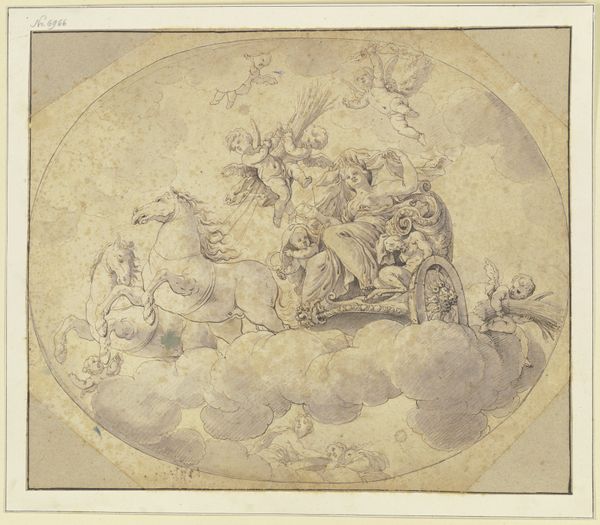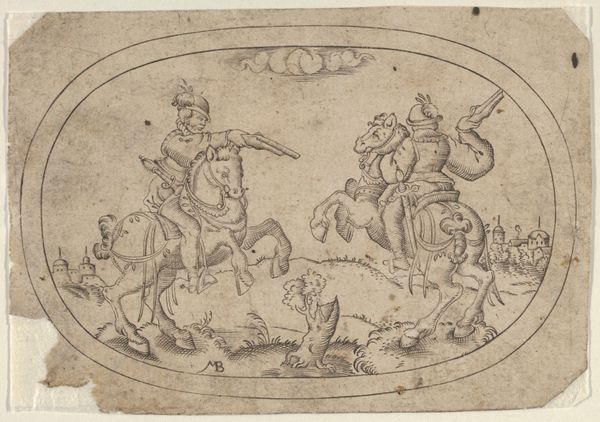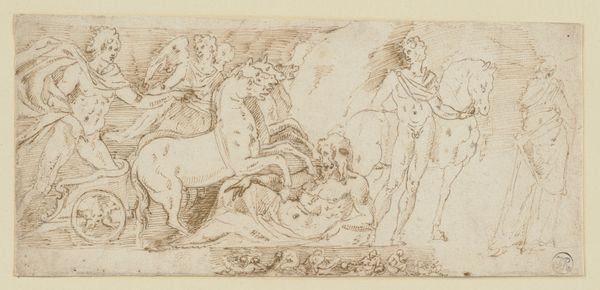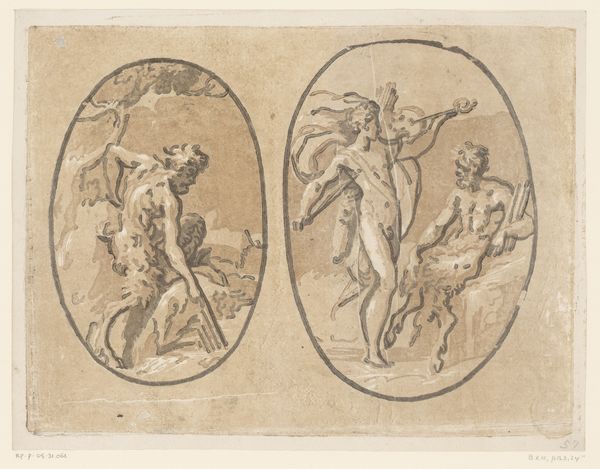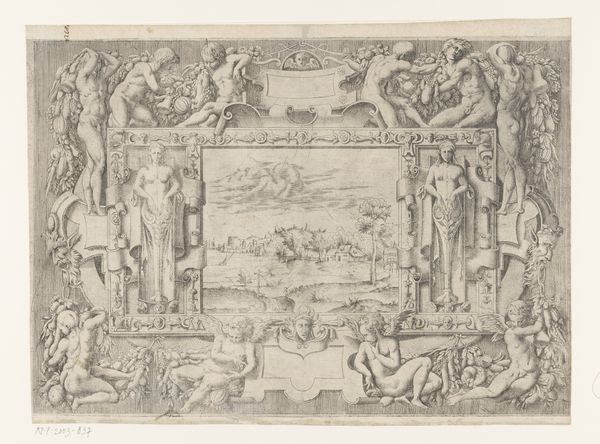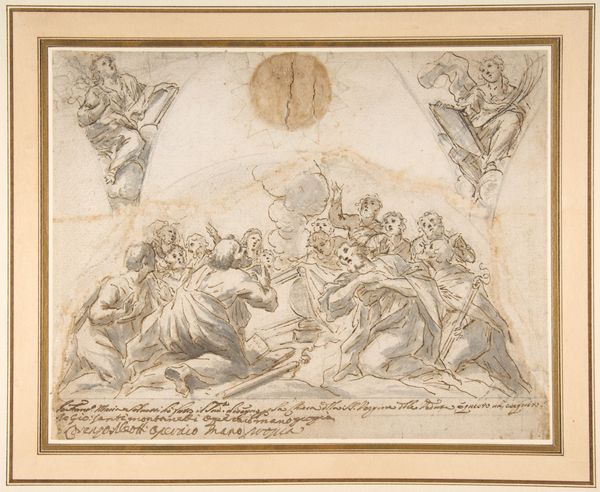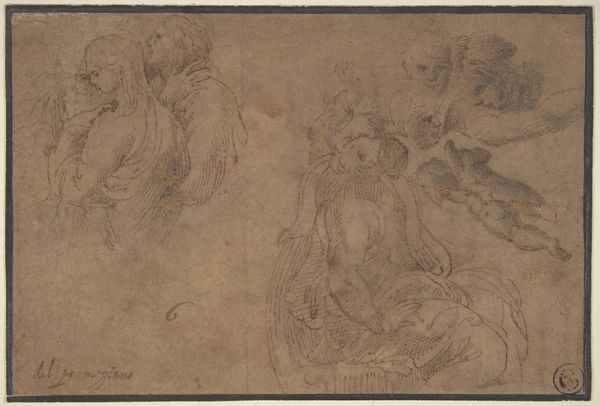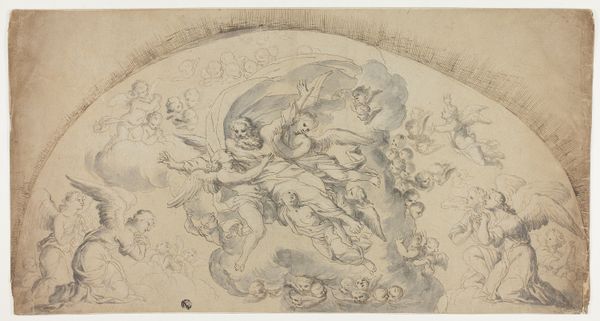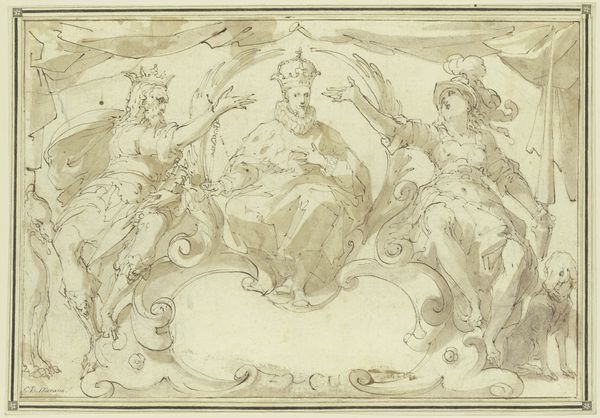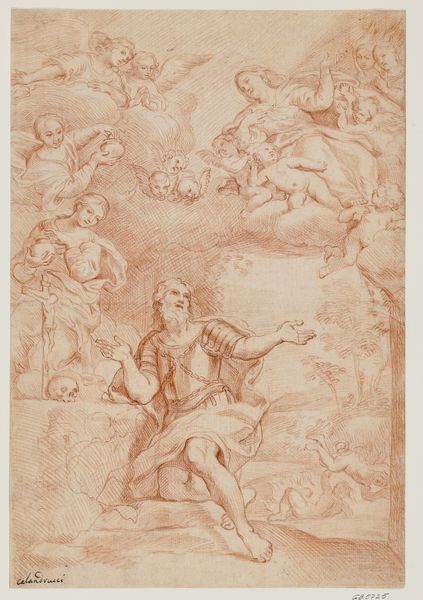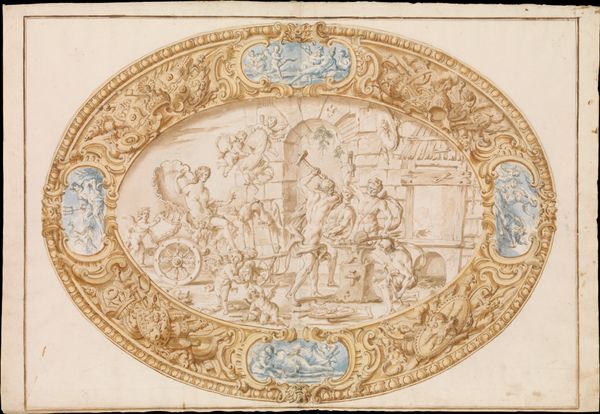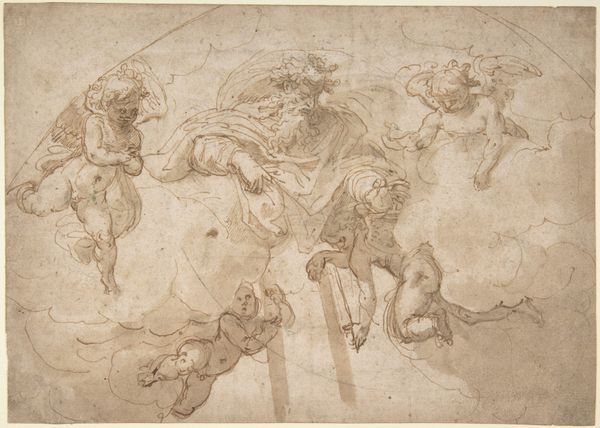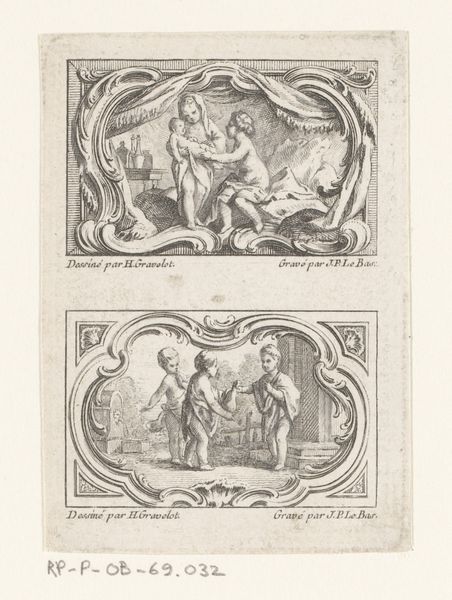
Design for the Decoration of an Oval Dish with a Bacchanal 17th century
0:00
0:00
drawing, print
#
drawing
#
allegory
#
baroque
# print
#
figuration
Dimensions: Sheet: 5 13/16 × 7 3/16 in. (14.7 × 18.3 cm)
Copyright: Public Domain
Editor: This is Filippo Lauri’s 17th-century drawing, "Design for the Decoration of an Oval Dish with a Bacchanal," currently at the Metropolitan Museum of Art. The figures sketched in sanguine have a certain lightness about them despite their complex arrangement in this oval composition. How do you interpret the symbols used here, and what do they tell us about the work's purpose? Curator: The figures, rendered in sanguine, are not just figures, but signifiers, echoing narratives and emotions rooted in cultural memory. The Bacchanal, specifically, with its frenzied dance and inebriated figures, is a symbol itself. It is about ecstasy and the abandonment of restraint. But Lauri isn't simply depicting chaos. It’s the design for a decorative dish. So, the figures tell us of ritual and celebration. The figures, though, are not merely characters in a narrative, but archetypes; each gesture and placement would be read by a contemporary audience. The oval shape adds another layer. It hints at a contained energy, like a snapshot of an overwhelming revelry, domesticated by its form. Does that resonance with you? Editor: That does make sense. The dish domesticates this overwhelming sense of abandon you describe. It seems that this dish wasn’t just for eating! Thinking about it, where do you see Baroque conventions at play? Curator: It's in the swirling dynamism, the dramatic poses, the almost theatrical expressions captured in simple sanguine lines. Consider how this work continues visual allegories we recognize from antiquity but presents them through a new cultural lens that embodies a constant visual conversation. Editor: It’s incredible to think that a dish could carry such a weight of history and symbolism! I’ll definitely see decorative arts differently. Curator: Precisely. Seeing through an Iconographic lens helps unlock layers of cultural memory embedded within everyday objects, enabling a profound interaction between the observer and artwork.
Comments
No comments
Be the first to comment and join the conversation on the ultimate creative platform.
